MEASUREMENT BY STRATEGY 3: EXERCISING THEIR COLLECTIVE VOICE
Organizations executing this strategy are focused on informing and organizing parents so they can exercise the power of their collective voice to make a change in the way an education system operates – be it a school, a district or at the state level. Education systems are political systems. There are always competing interests in any political system, and exercising their collective voice allows parents to be competitive.
There is a wide range of impact agendas a collective voice campaign can pursue, as well as a wide range of potential actions a collective voice campaign can employ. For more details on collective voice campaigns, click here.
1. Identify impact agenda
The first step is to clearly articulate the impact agenda of a campaign that key stakeholders agree with and are excited to exercise their power to support. Organizations co-create this agenda in collaboration with the communities they serve. This requires sharing points of view, listening to others, and deep dialogue built not just on data but also values.
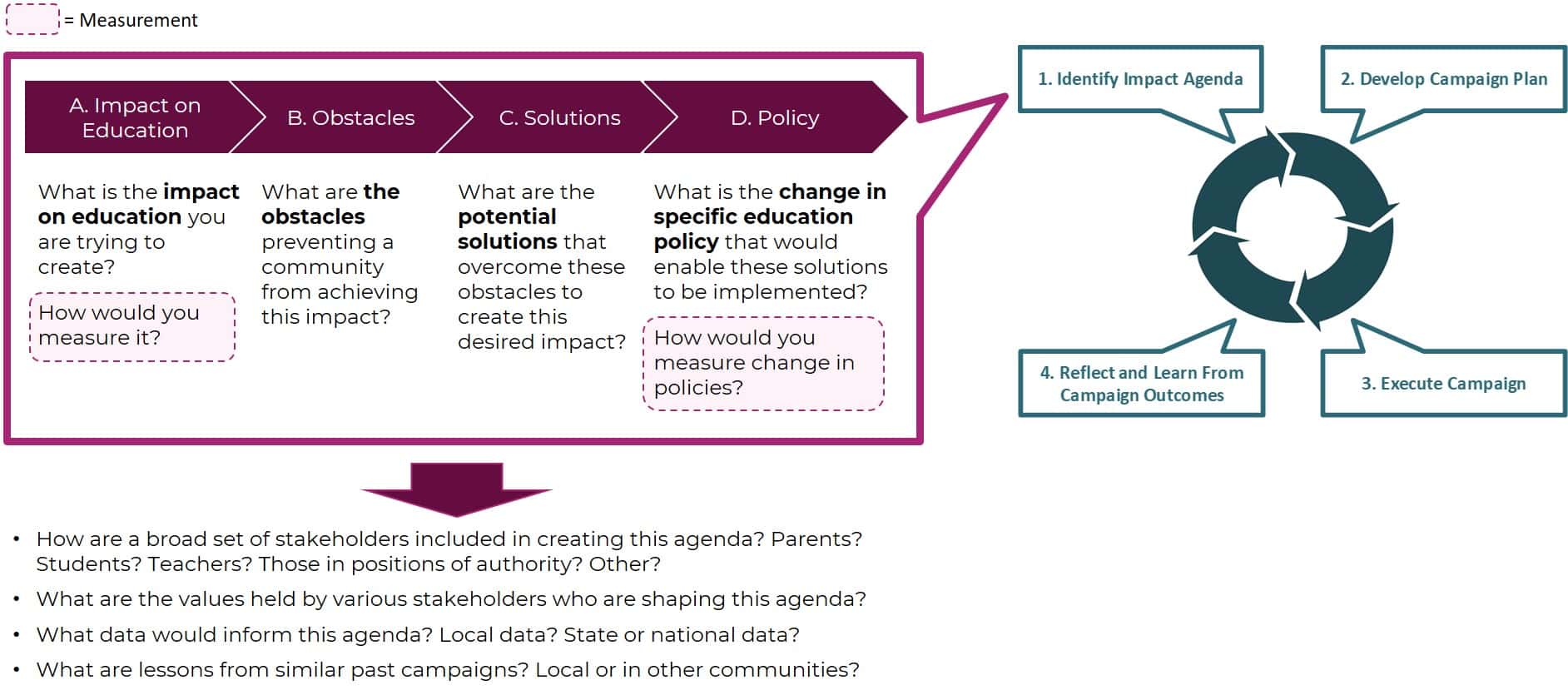
2. Campaign plan
Next, an organization develops a campaign plan, (a) mapping the power dynamics it is seeking to influence, (b) determining what actions and corresponding infrastructure are required, (c) developing a workplan and clear picture of resources required, and (d) identifying any risk or opportunity cost.
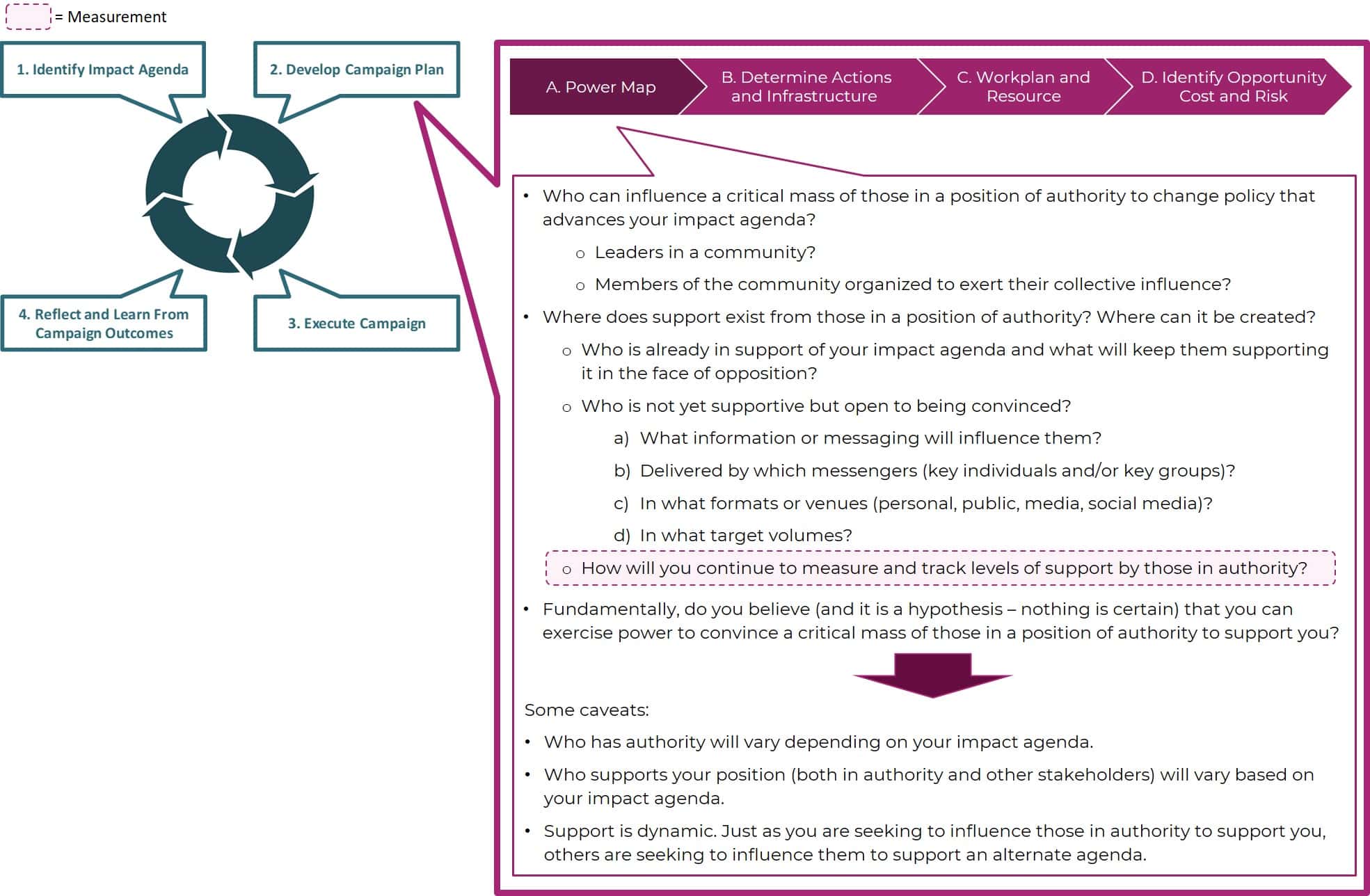
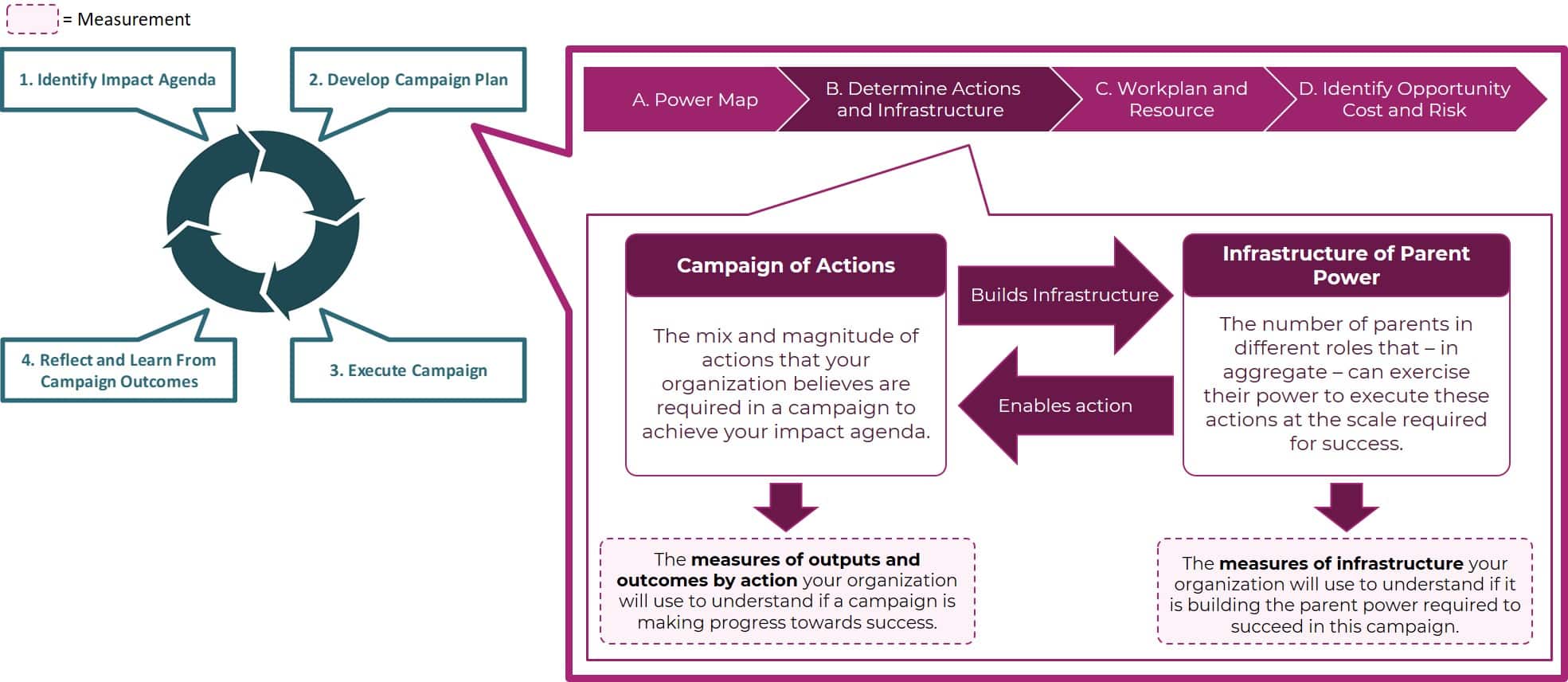
For Strategy 3, parents exercising their collective voice, the most common actions are:
- Online reach and engagement
- Workshops and trainings
- 1-on-1 meetings
- House meetings
- Research meetings
- Communications by parents
- Public actions
- Phone-banking
- Canvassing
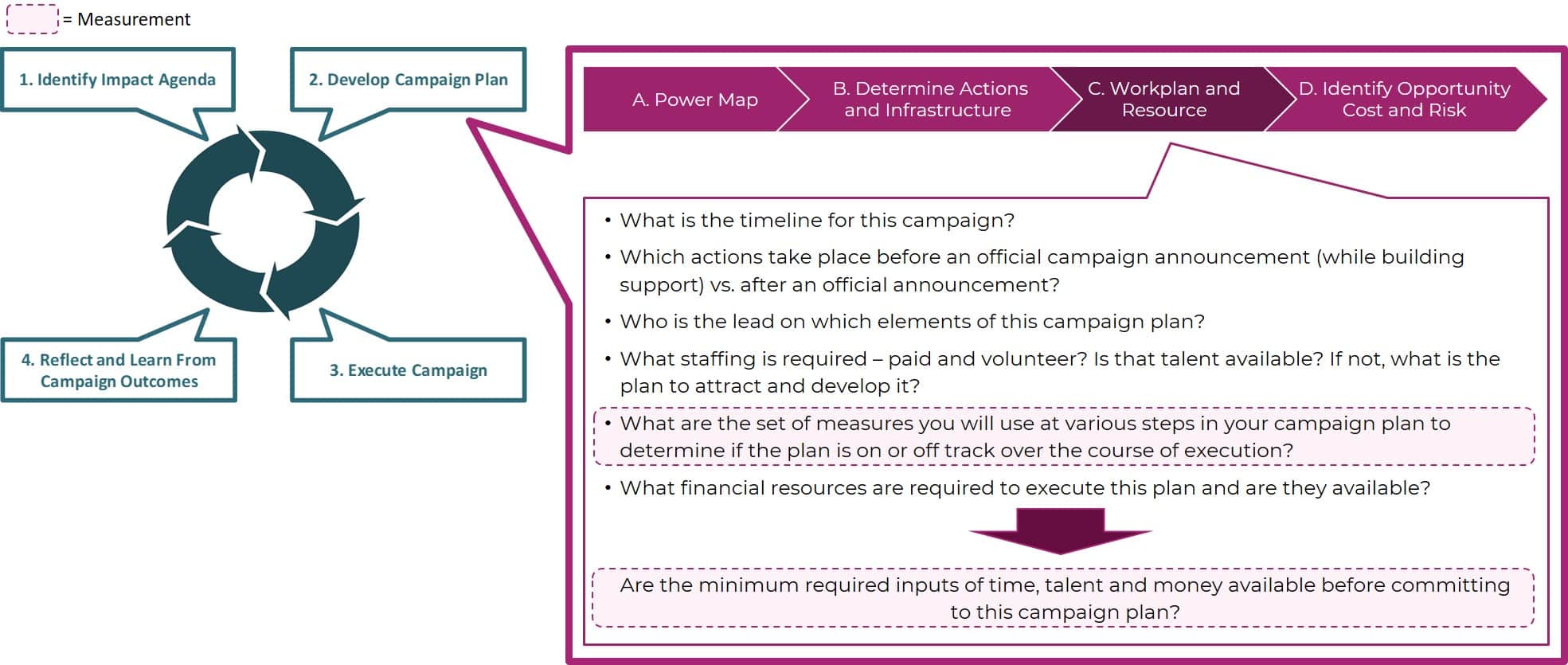
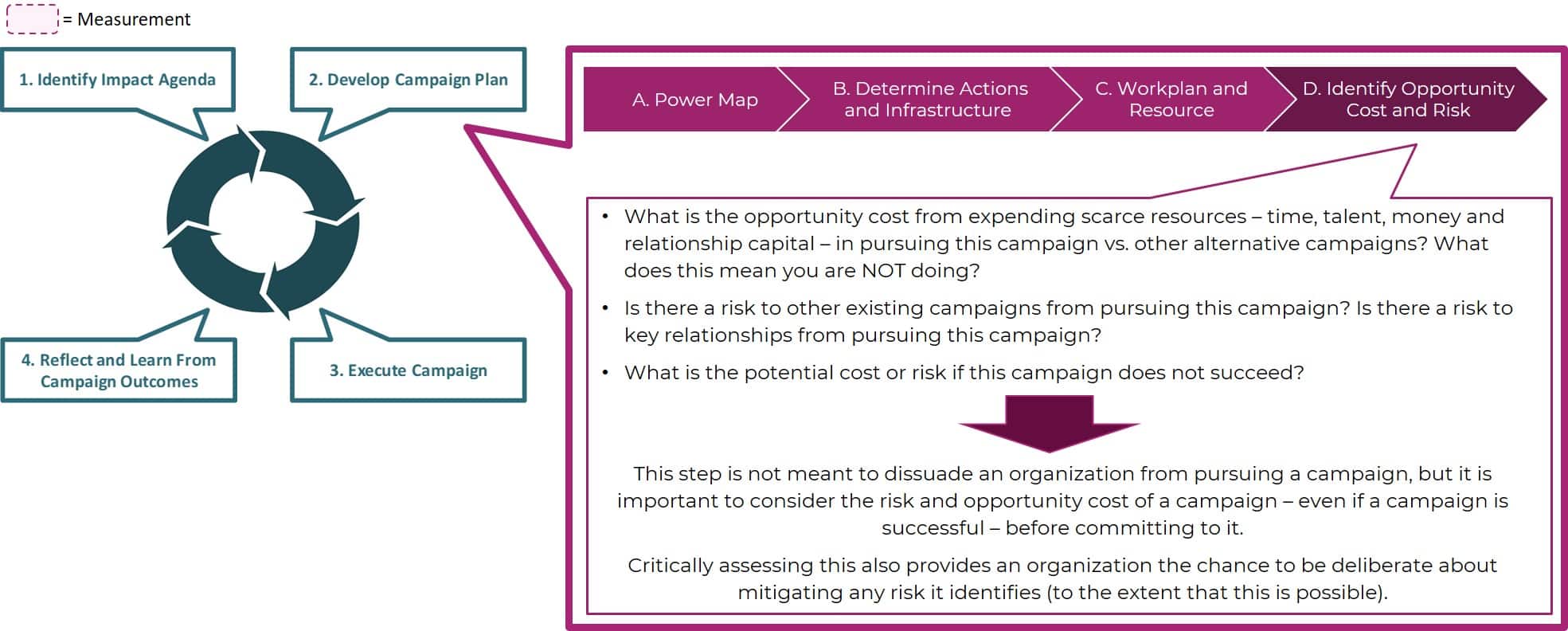
A gut-check before committing
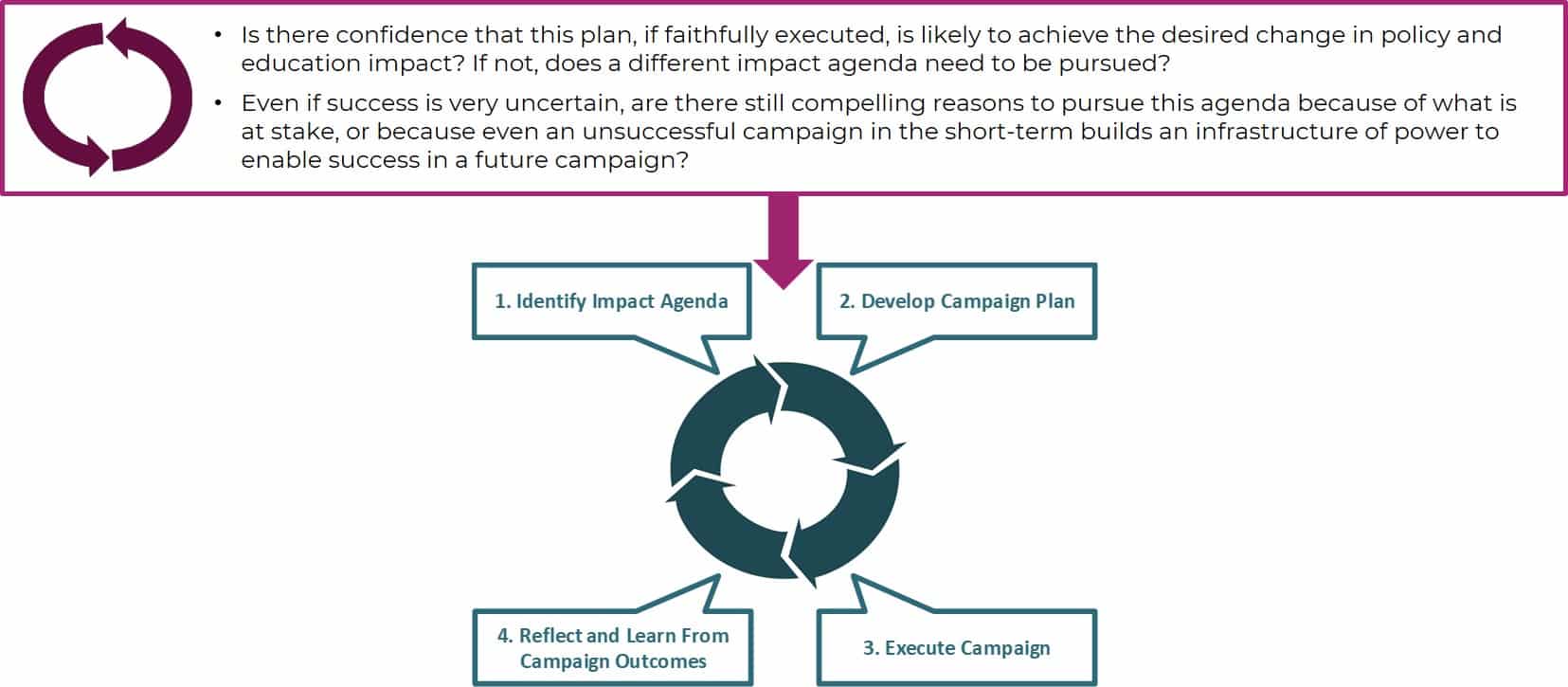
3. Execute campaign

4. Reflect and learn from campaign outcomes
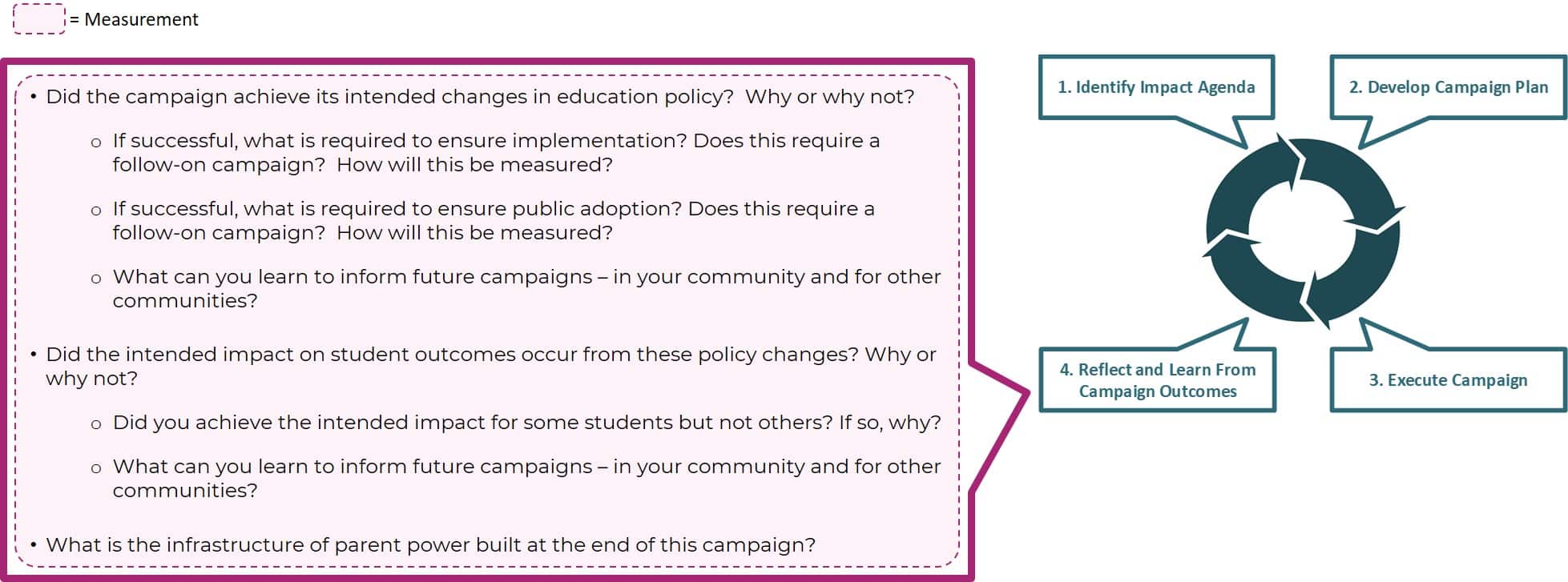

225 Franklin Street, Suite 350
Boston, MA 02110
617.912.8800
This work is licensed under a Creative Commons Attribution-NonCommercial-ShareAlike 2.0 License (CC BY-NC-SA 2.0)
Click Here to learn more.
